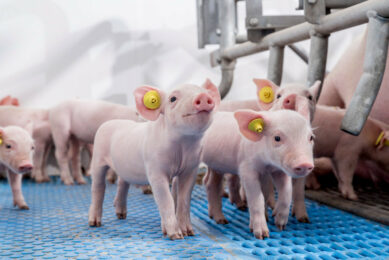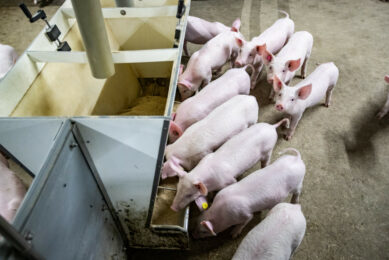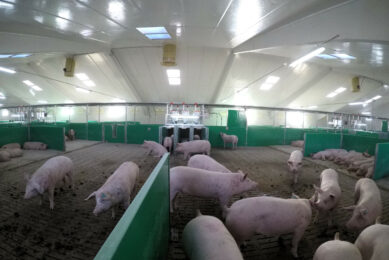Pigs meet the camera: Webinars on Covid-19 and Strep suis

Now the world is in lockdown, many companies in the swine business want to reach out to customers in different ways. Physical meetings are impossible, so webinars are a good way to remain visible in the market. This week on the menu: webinars on Streptococcus suis and Covid-19.
The lockdown affects the international swine business in many countries. Yet the coronavirus and African Swine Fever show the industry that livestock is vulnerable and that it is necessary to continue thinking about strategies.
Online focus on Streptococcus suis
In a webinar by EW Nutrition, broadcast on Wednesday April 22, speaker Rafa Pedrazuela, the company’s global technical manager for pigs, addressed the Streptococcus suis bacteria infection. S. suis is a well-known pathogen in many markets but can also be classified as ‘emerging’ in some markets, said Pedrazuela, placing the outbreak in a wider context of the increasing global move towards using fewer antibiotics or zinc oxide.
The bacterium’s presence is mostly felt between 2-3 weeks post-weaning, Pedrazuela said, and infection is characterised by e.g. arthritis, nervous signs, stunting, fever and death. Interestingly, he quoted recent research which indicated that especially 1 week before weaning, piglets are vulnerable for infection, which leads to problems a few weeks later. Controlling S. suis, therefore, requires a holistic approach, with attention to co-infections and emphasis on early detection and intervention. Pedrazuela added that the control will come from the gut (microbiome stabilisation).
Pig veterinarians talking about Covid-19
In another interesting set-up, on Tuesday, April 21, MSD Animal Health organised a webcast introducing 2 top veterinary experts to discuss the situation with Covid-19: Hans Nauwynck, professor of virology, in the department of virology, parasitology and immunology at Ghent University, Belgium and Prof Dr Joaquim Segalés, director of CReSA, associate professor at the veterinary school of the Universitat Autònoma de Barcelona, Spain.
Covid-19 at microbiological level
Prof Nauwynck spoke in-depth about the classification of coronaviruses – there being alpha, beta, gamma and delta-coronaviruses, in which species these viruses usually occur and how the virus does its job at microbiological level. SARS-CoV-2, the causative agent of Covid-19, is a beta-coronavirus, unlike well-known porcine coronaviruses like PEDv or TGEv, which belong to the alpha category.

Interestingly, Prof Nauwynck spoke about a serological test he did with a group of 275 veterinarians throughout Belgium and how he had them all tested for coronavirus. That is because these days, it is impossible to know the percentage of people infected because not everybody develops clinical signs. 22 in total tested positive – or 5.9% of the total. Extrapolating this for Belgium, he concluded that over 676,000 people out of a population of roughly 11.5 million might have gotten infected.
How did Covid-19 transfer to humans?
Prof Segalés then dived into the question as to how the virus initially got transmitted to humans. There are many theories. He summed up a few. “We think it is a zoonotic virus,” he said, pointing to 2 major hypotheses:
- There was a natural selection in an animal host before zoonotic transfer;
- There was a natural selection in humans following zoonotic transfer.

He pointed to bats as the origin of the virus, as there a virus can be found that has a 96% nucleotide similarity to SARS-CoV-2. Based on recent Chinese research, he said, “We do not really believe the pangolin to be the intermediate host.” In pangolins, coronavirus was found with 10% divergence from SARS-CoV-2.
So which animal was it, if there was an intermediate host? He summed up various animals, including pets, as occasional cases of cats and dogs have been described to be infected. Prof Segalés: “It is considered that pets are not playing a role in the epidemiology of Covid-19’.” He called them ‘co-lateral victims’. Pigs, ducks and chickens, he said, have been ruled out as transmitters of the virus.

Pig webcasts in times of Covid-19
Pig Progress and its sister titles All About Feed, Poultry World and Dairy Global have much experience with organising and hosting webinars – for instance a recent webinar on calcium. For more information, contact the author below.











